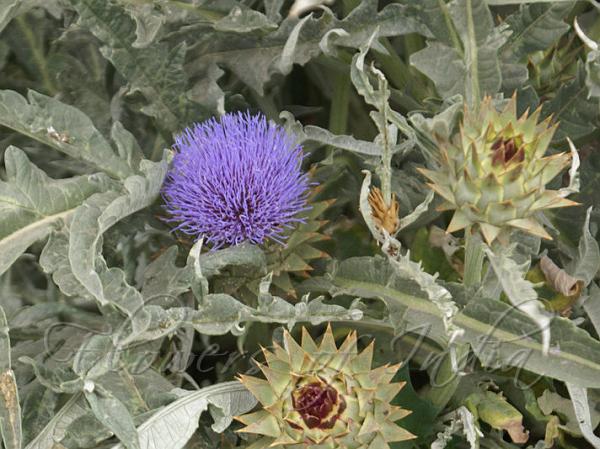|
| Cardoon |
|

|

| File size | 130630 |
| Original date | 7/1/11 11:25 AM |
| Resolution | 712 x 534 |
| Flash | Flash did not fire, auto |
| Focal length | 50.0mm |
| Exposure time | 1/125s |
| Aperture | 5.6 |
| Focus Distance | |
| Metering Mode | Multi-segment |
| Camera make | SONY |
| Camera model | DSLR-A100 |
| Sensor type |
|
|
|
Photo: |
Botanical name: Cynara cardunculus Family: Asteraceae (Sunflower family)
Synonyms: Carduus cardunculus, Cynara sylvestris, Cynara scolymus
Synonyms: Carduus cardunculus, Cynara sylvestris, Cynara scolymus
Cardoon is an
old Victorian favourite, once grown as a vegetable and blanched for use
rather like celery. Cardoon is now valued for its striking silvery giant
thistle like shape which adds a theatrical touch to a border.
Cardoon is a magnificent perennial native to southern Europe, with spiny,
gray-green foliage and purple, thistle-like flowers to five feet.
In summer tall
flower stems are topped by fat thistle buds which resemble small globe
artichokes - the plants are close cousins. The buds finally open into large
purple thistles which attract lots of bees; the dead heads often dry quite
attractively on the plants. Native around the Mediterranean region, cardoons
are thought to be the wild progenitors of the globe artichoke, Cynara scolymus
- a plant only known in cultivation. The fleshy leaf bases of the cardoon are
sometimes eaten cooked or raw, like celery. Both artichokes and cardoons
have specialized bracts (phyllaries) that surround each composite flower head,
the inner, soft base of which is edible in the artichoke. The name Cynara
comes from the Greek kyon, a dog, a reference to the tooth-shaped phyllaries.
| Identification credit: Gurcharan Singh | Photographed in Iqbal Garden, Srinagar, Kashmir. |
• Is this flower misidentified? If yes,